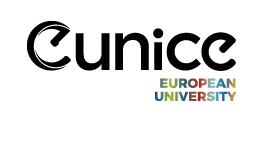Τη Τρίτη 13 Μαΐου στις 12:00 στο εργαστήριο Α9, Επικοινωνίας Ανθρώπου Μηχανής, του κάτω κτηρίου θα γίνει ομιλία στα πλαίσια του ERASMUS από μια επισκέπτρια καθηγήτρια του Polytechnic University of Castelo Branco της Πορτογαλίας. Η παρουσίαση θα διαρκέσει περίπου 2.0 ώρες. Ακολουθεί ένα σύντομο βιογραφικό της ομιλήτριας και τα βασικά σημεία της ομιλίας.
Bio: Arminda Guerra Lopes is a Professor at the Polytechnic University of Castelo Branco, Portugal, for thirty years. She is a research fellow at the Laboratory of Robotics and Engineering Systems (LARSyS/Interactive Technologies Institute) in Portugal. She has held several management roles at her institution: vice director of the school, president of the scientific board, and president of the pedagogical board. Her research interests include Human-Computer Interaction, Information Systems and Technology, and Research Methodologies. Her research focuses on Social Informatics, Interaction Design, Human Work Interaction Design, Creativity and Innovation, Collaborative Work, and Quality of Life Technologies. Arminda has collaborated on various research projects both in Portugal and internationally.
Multimodal Dialogues in Technological Artifacts: Exploring SandBox, TIDE(IDEArt), and Threshold as Vehicles for Human-Machine Interaction and Relationship Language
Abstract:
How technological artifacts facilitate multimodal communication through sensory engagement will be examined. Specifically, it investigates how installations like SandBox, TIDE(IDEArt), and Threshold create distinctive dialogues through different sensory channel combinations —touch and hearing, vision and hearing, and full-body interaction with visual and auditory elements, respectively. This work analyzes how these technological interfaces enable “relationship language”.
The research explores fundamental aspects of technology and its role in society, examining how technology is developed, implemented, and affects human-machine interaction. Technology development is a human activity resulting from individual or collective needs and creative capacity. The evolution of interaction with electronic devices has led to a multimodal approach, where user experience designers consider information processing, human perception, and behavioral patterns when designing interfaces.
In interaction design, the focus has shifted from purely aesthetic solutions to engineering approaches that seek more natural interactions between systems and users. The guiding principles include goal-oriented design, usability, positive emotional responses, and human-centered approaches, aiming for accessible solutions regardless of physical or mental capabilities. By analyzing verbal and non-verbal behaviors during design and interaction processes, this research illuminates the intersection of technology design, human sensory experience, and the nuanced communication patterns that emerge from these interactions.
-
Έναρξη Εκδήλωσης: 2025-05-13
Λήξη Εκδήλωσης: 13/05/2025


